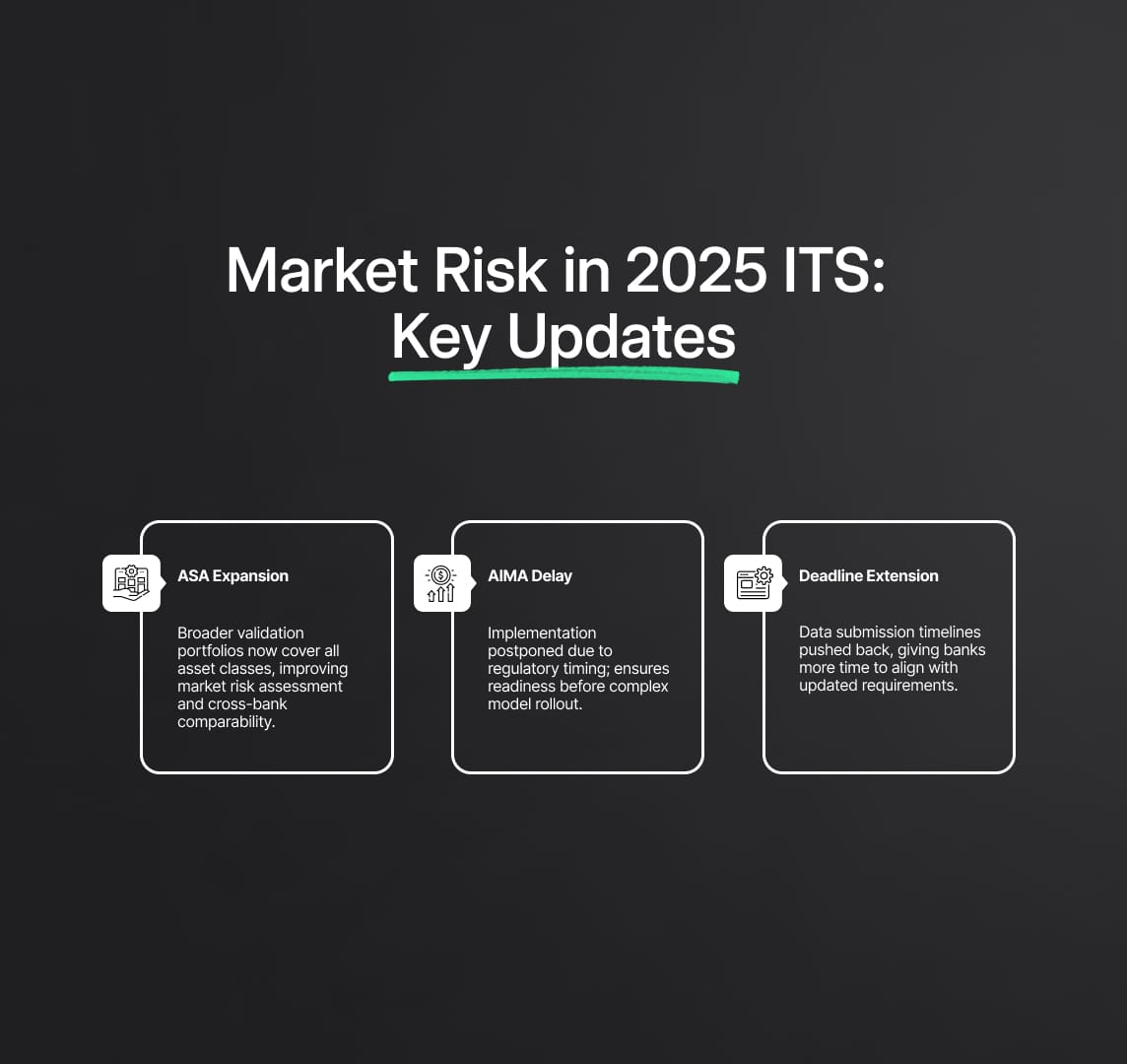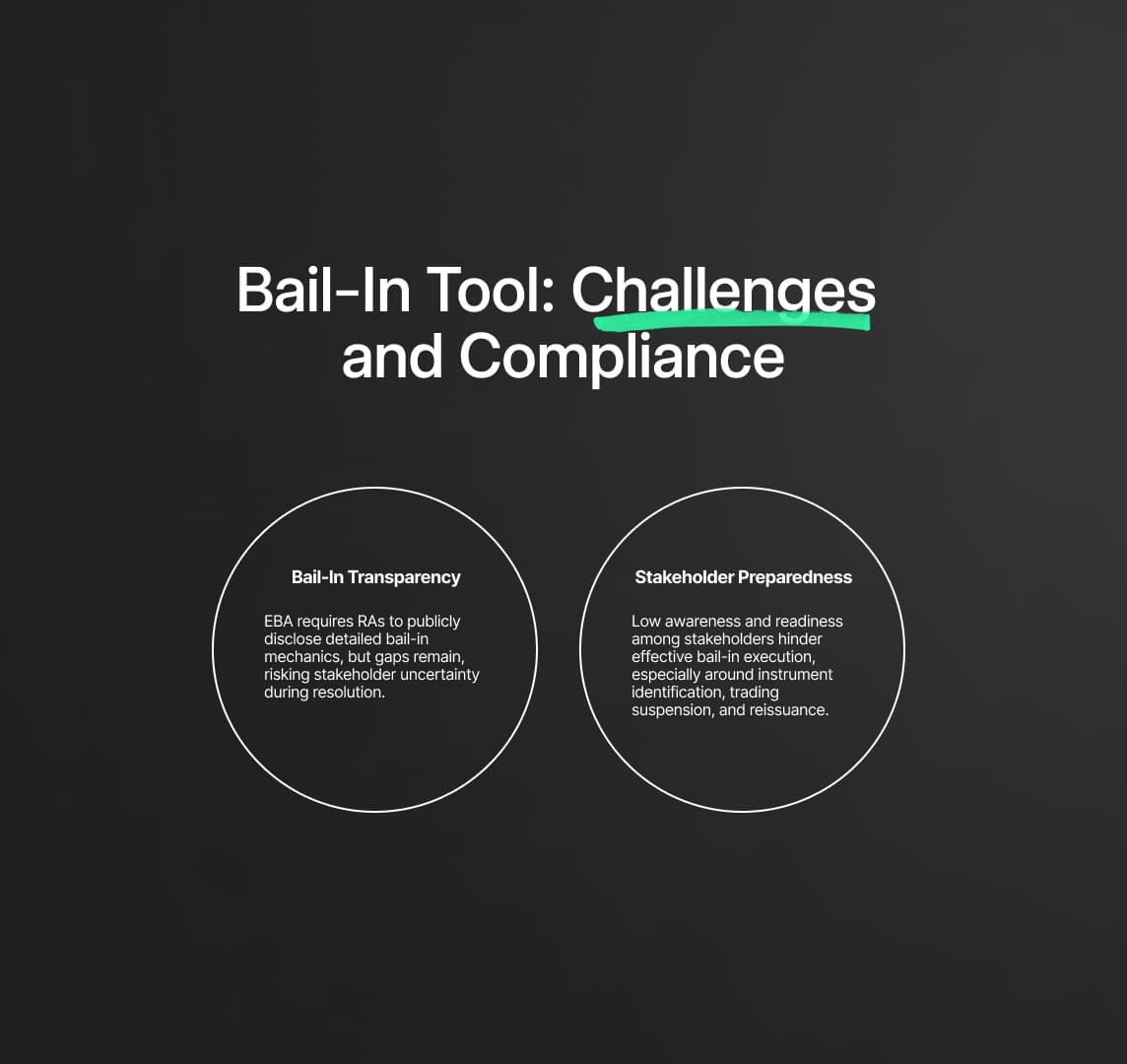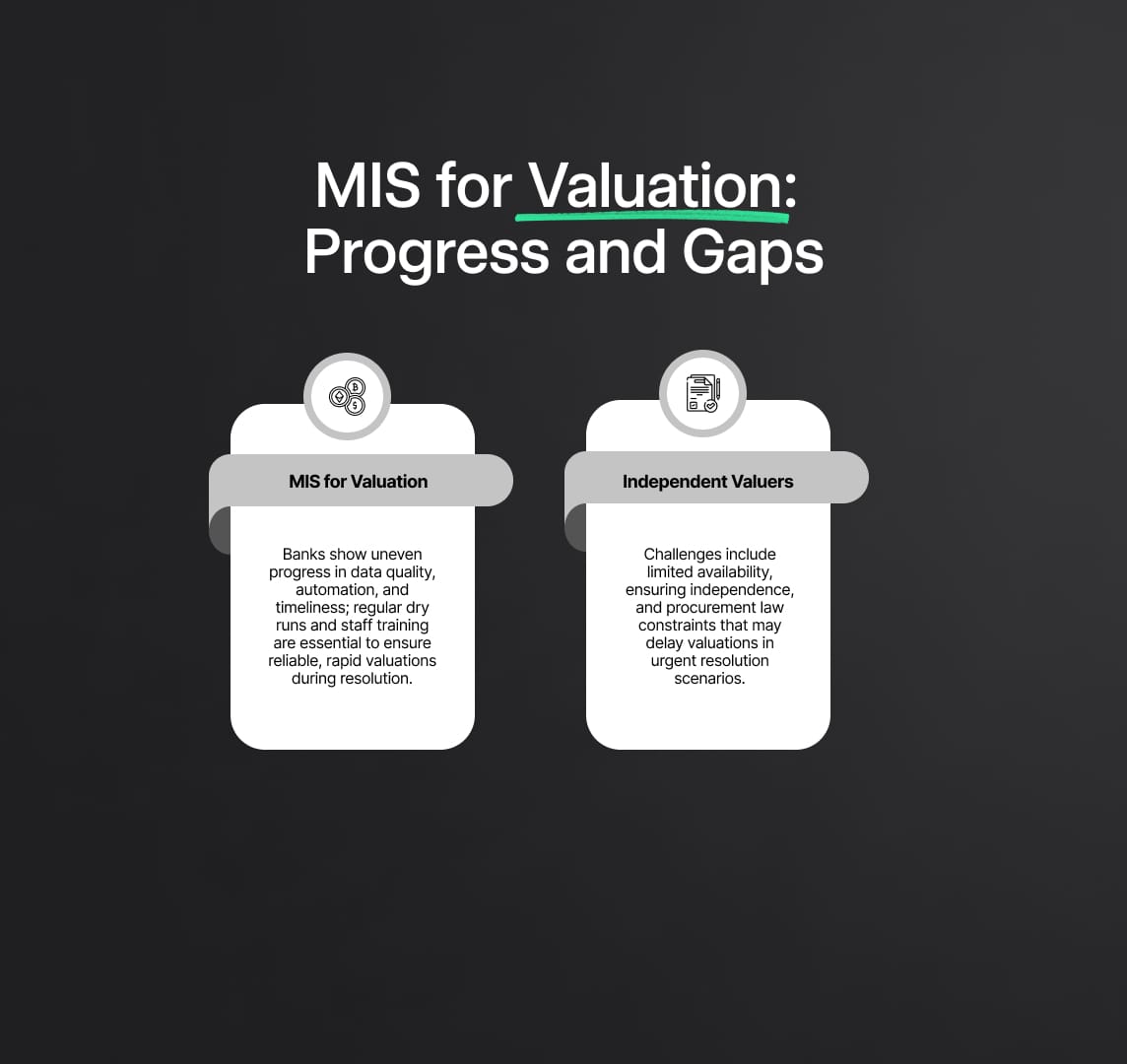EBA ITS 2025: MIS Enhancements for Resolution
The EBA's 2025 ITS emphasizes critical updates in collateral mobilisation, moratorium powers, and MIS for resolution. Key enhancements include stress-testing procedures, harmonized legal frameworks, and guidelines for appointing independent valuers, ensuring a more resilient EU financial system.

The European Banking Authority (EBA) plays a pivotal role in ensuring a unified and resilient financial regulatory environment across the European Union (EU). This mandate is crucial in an interconnected financial system, where inconsistencies in regulatory practices can introduce significant risks. To meet its objectives, the EBA is committed to fostering convergence across the EU’s internal market by promoting a common supervisory culture and ensuring that regulatory authorities operate consistently. A critical instrument in this endeavor is the development and implementation of Implementing Technical Standards (ITS), which serve as the backbone for guiding resolution authorities (RAs) in managing and mitigating risks within the EU banking system.
In its final draft of the ITS for 2025, the EBA introduces significant amendments targeting the benchmarking of credit risk, market risk, and IFRS9 models. These amendments are not merely procedural updates but critical enhancements aimed at improving the quality and consistency of data collected during the annual benchmarking exercises. By refining these processes, the EBA seeks to bolster the stability and resilience of the EU’s financial system, ensuring it can effectively respond to both anticipated and unforeseen challenges.
Overview of the EBA’s Second Report on Resolution Convergence
The EBA’s second report on resolution convergence is a key strategic document that provides detailed guidance for RAs as they prepare for the 2025 European Resolution Examination Programme (EREP). This report is instrumental in setting the regulatory agenda for the coming year. It serves two primary functions: identifying and setting out the key topics that all RAs are expected to prioritize in their 2025 plans, and evaluating how effectively the key topics from the 2023 EREP were integrated into the work of RAs.
The EREP priorities for 2025 largely build on the focus areas established in 2024, underscoring the ongoing relevance and complexity of these issues. The process of determining these priorities involved extensive discussions with RAs, ensuring that the priorities reflect not only regulatory necessities but also the practical realities of current market conditions and recent policy developments. This collaborative approach ensures that the EBA’s directives are grounded in the operational experience and insights of those directly involved in day-to-day regulation and resolution activities.

Key EREP Priorities for 2025
The 2025 EREP priorities, as detailed by the EBA, concentrate on three critical areas that were also central to the 2024 priorities. These areas form the pillars of the EU's resolution framework, each essential for maintaining the stability of the financial system.
1. Operationalisation of the Resolution Strategy
The operationalisation of the resolution strategy remains a critical priority as it directly influences the preparedness of banks to implement resolution plans effectively. The EBA emphasizes that these strategies must transcend theoretical exercises; they need to be practical, rigorously tested, and ready for deployment in real-world crisis scenarios. The focus here is on refining and stress-testing these plans to ensure seamless execution under stress conditions.
The ITS provide detailed guidelines on how RAs should structure and maintain their resolution strategies. These guidelines include developing comprehensive resolution playbooks, integrating resolution plans with other regulatory frameworks, and establishing clear communication protocols among all stakeholders. The goal is to ensure that in the event of a resolution, there is no ambiguity regarding the steps to be taken, who is responsible for each action, and how these actions fit into the broader resolution strategy.
Moreover, the EBA stresses the importance of adaptability in these plans. Given the dynamic nature of financial markets, resolution strategies must evolve in response to new risks and changing circumstances. This requires ongoing review and adjustment, focusing on ensuring that the plans remain relevant and effective in an ever-changing environment.
2. Management Information Systems for Valuation (MIS)
Management Information Systems (MIS) for valuation are another critical focus area. Accurate and timely valuation is indispensable during a bank resolution, as it directly impacts the decisions RAs must make under tight deadlines. The emphasis on MIS in the 2025 ITS reflects the need for robust systems that can deliver real-time data and comprehensive assessments during a resolution process.
The ITS outline specific technical and operational requirements for these systems, emphasizing the importance of data quality, automation, granularity, and timeliness. These systems must process large volumes of data quickly and accurately, ensuring valuations are based on the most current information. This is particularly crucial in crisis situations where market conditions can change rapidly, and decisions must be made based on up-to-date data.
Additionally, the EBA recognizes the importance of stress testing these systems to ensure their reliability. The ITS recommend regular dry runs and scenario testing to identify potential weaknesses in the MIS infrastructure. These tests help RAs and financial institutions fine-tune their systems, ensuring they can handle the pressures of a real-world resolution scenario.
3. Operationalisation of the Liquidity Strategy in Resolution
The operationalisation of the liquidity strategy in resolution is equally vital, as liquidity is the lifeblood of the financial system, especially during times of crisis. Ensuring that banks have access to sufficient liquidity during a resolution is essential for maintaining operational continuity and preventing a broader financial meltdown.
The ITS provide a comprehensive framework for developing and implementing liquidity strategies that are both robust and flexible. This includes identifying potential liquidity sources, establishing contingency funding plans, and ensuring that these plans are fully integrated with the bank’s overall resolution strategy. The EBA emphasizes that these liquidity plans must be rigorously tested and regularly updated to reflect changes in market conditions and the financial institution's specific circumstances.
The ITS also stress the importance of understanding the interplay between different sources of liquidity and the timing of their availability. For instance, while central bank facilities may provide immediate liquidity, other sources such as asset sales or market borrowing may take longer to materialize. The ITS guide RAs in developing strategies that consider these factors, ensuring liquidity needs can be met throughout the resolution process.
Furthermore, the ITS highlight the importance of collateral management as part of the liquidity strategy. RAs are advised to ensure that financial institutions can effectively mobilize collateral, especially assets that may not be eligible for ordinary monetary policy operations. This capability is crucial for maintaining liquidity in situations where traditional funding sources may be constrained.

Evolving Focus on MREL and Bail-In Tool Operationalisation
While the Minimum Requirement for Own Funds and Eligible Liabilities (MREL) was a standalone priority in previous years, the 2025 ITS reflect a strategic shift. As most banks have now met their MREL targets, the EBA’s focus has shifted toward the operationalisation of the bail-in tool. This shift highlights the EBA’s recognition that while MREL compliance is important, the true challenge lies in ensuring these instruments can be effectively utilized in a resolution scenario.
The ITS provide detailed guidance on how RAs should monitor and assess the quality and eligibility of MREL instruments, with a particular emphasis on legal certainty and the enforceability of bail-in contracts. This is especially critical for contracts governed by third-country laws, where different legal frameworks can complicate the bail-in process. The ITS also address the technical and operational requirements for executing a bail-in, including processes for identifying and valuing liabilities, suspending trading, and issuing new instruments post-bail-in. These details are crucial for ensuring the bail-in process is smooth, transparent, and legally sound, minimizing the risk of disruption to the financial system.

Market Risk Framework: Key Changes and Implications in the 2025 ITS
The EBA's final draft of the ITS for 2025 introduces significant amendments aimed at refining the market risk framework within the EU’s banking sector. One of the most notable developments in the 2025 ITS is the expansion of the Alternative Standardised Approach (ASA) validation portfolios. This change broadens the scope of market risk benchmarking by encompassing all asset classes, representing a substantial evolution from the 2024 exercise. This expansion reflects the EBA’s commitment to ensuring a more comprehensive and detailed evaluation of the risks associated with various asset classes, ultimately enhancing the robustness of the market risk assessment process.
1.Expansion of the Alternative Standardised Approach (ASA) Validation Portfolios
The inclusion of all asset classes under the ASA validation portfolios represents a strategic enhancement of the market risk framework. This move addresses the growing complexity and diversity of financial instruments in the market, which require a more granular approach to risk assessment. By expanding the ASA to cover a wider range of asset classes, the EBA aims to improve the accuracy and comparability of market risk data across different financial institutions.
The expanded ASA validation portfolios are expected to provide a more holistic view of market risks, enabling regulators to better identify potential vulnerabilities within the banking sector. This comprehensive approach is particularly important given the increasing interconnectedness of global financial markets, where risks in one asset class can quickly propagate to others, amplifying overall systemic risk.
2.Delay in the Implementation of the Alternative Internal Model Approach (AIMA)
While the expansion of the ASA is a significant advancement, the 2025 ITS also acknowledge certain limitations. Notably, the templates based on the Alternative Internal Model Approach (AIMA) have not been implemented. This decision stems from the adoption of a Delegated Act by the European Commission, which postpones the implementation of the Fundamental Review of the Trading Book (FRTB) within the EU.
The postponement of the AIMA templates means the content and sample of banks for data collection in the area of market risk will remain consistent with the 2024 exercise. While this might appear as a setback, it underscores the EBA’s cautious approach to regulatory implementation, ensuring the necessary infrastructure and legal frameworks are fully in place before introducing more complex models like the AIMA. This delay allows both regulators and financial institutions more time to prepare for the eventual integration of these sophisticated risk assessment tools, ensuring a smoother transition when the AIMA is finally implemented.
3.Postponement of Data Collection Deadlines
In addition to the adjustments in the framework, the data collection deadlines for the 2025 exercise have been postponed. This extension is a pragmatic response to the delayed publication of the amending ITS, granting participating banks additional time to adjust their reporting processes. The postponement is critical for ensuring banks can accurately and comprehensively report their market risk data in alignment with the new requirements. This additional time is particularly beneficial for banks as they work to incorporate the expanded ASA portfolios into their risk management frameworks, allowing for more thorough and precise data submission.

Operationalisation of the Bail-In Tool: Challenges and Compliance
The bail-in tool remains a fundamental component of the EU's resolution framework, designed to ensure shareholders and creditors, rather than taxpayers, bear the costs of a bank’s failure. However, the EBA’s latest ITS highlight several significant challenges associated with the operationalisation of this tool, particularly in terms of transparency and stakeholder preparedness.
Transparency and Availability of Bail-In Mechanics
Transparency is critical in the successful deployment of the bail-in tool. The EBA mandates that RAs publish detailed bail-in mechanics via the EBA’s supervisory disclosure tool. This transparency is essential for maintaining trust and ensuring all stakeholders understand how the bail-in process would be implemented in the event of a bank’s resolution. Despite this requirement, the EBA has noted that not all RAs have fully provided access to their bail-in policies. This lack of complete transparency could undermine the effectiveness of the bail-in tool, as stakeholders may lack the necessary information to navigate the process effectively.
The EBA continues to monitor compliance with these transparency requirements, stressing the importance of full disclosure. By ensuring all RAs meet their obligations, the EBA aims to create a more predictable and orderly resolution process, which is crucial for maintaining stability during a financial crisis.
Preparedness and Awareness Among Stakeholders
A critical issue identified by the EBA is the low level of preparedness and awareness among stakeholders regarding the operationalisation of the bail-in tool. This lack of readiness poses serious challenges, particularly in scenarios where the tool needs to be activated quickly and efficiently. Key issues include difficulties in identifying holders of instruments subject to bail-in, managing the suspension of trading, and meeting the requirements for issuing prospectuses for new instruments post-bail-in.
These challenges are exacerbated when dealing with third-country stakeholders, where differences in legal and operational frameworks can complicate the bail-in process. The EBA has identified these challenges as a priority area for improvement, urging RAs to enhance their engagement with stakeholders. This involves providing clearer guidance on the identification of instrument holders and outlining the specific procedures that will be followed in the event of a bail-in.

Liquidity in Resolution: Progress and Persistent Challenges
Ensuring adequate liquidity during a resolution is another critical focus of the 2025 ITS. Liquidity is essential for maintaining the operational continuity of a bank undergoing resolution and for stabilizing the broader financial system during times of stress. The EBA’s report on resolution convergence highlights both the progress made and the persistent challenges that remain in this area.
Advances and Continued Testing
Throughout 2023, RAs made notable progress in addressing liquidity issues within the resolution framework. Some RAs have improved their approaches to liquidity management, developing more robust strategies that better reflect the realities of a resolution scenario. However, significant challenges remain, particularly in ensuring these strategies are sufficiently credible and resilient under stress conditions.
To address these challenges, the EBA has emphasized the importance of rigorous testing. RAs are expected to increase the level of testing for liquidity scenarios, challenging the assumptions made by banks and ensuring their liquidity strategies can withstand severe market disruptions. The spring 2023 bank failures served as a stark reminder of the importance of robust liquidity planning, prompting many RAs to reassess their strategies and assumptions in this critical area.
Reassessing Liquidity Assumptions and Strategies
The ITS underscore the necessity of continuously reassessing liquidity assumptions and strategies to ensure they remain relevant in a rapidly changing financial landscape. This includes evaluating the sources of liquidity, the timing of their availability, and the potential challenges in mobilizing collateral, particularly in stress scenarios. The EBA highlights the importance of ensuring collateral can be effectively mobilized, especially assets that may not be eligible for ordinary monetary policy operations.
This focus on collateral management is critical because the ability to quickly and efficiently mobilize collateral can make the difference between a successful resolution and a broader financial crisis. The ITS provide detailed guidance on the technical and operational aspects of collateral management, ensuring RAs and banks are prepared to meet liquidity demands during a resolution.

Collateral Mobilisation and Use of Moratorium Powers in the 2025 ITS
The EBA’s 2025 ITS place significant emphasis on the mobilisation of collateral and the use of moratorium powers as critical tools for enhancing the stability and effectiveness of the EU’s resolution framework. These areas are particularly important in ensuring banks can meet liquidity needs during crises and that RAs have the necessary powers to maintain order during the resolution process.
Collateral Mobilisation: Challenges and Technical Considerations
Collateral mobilisation is a key component of liquidity management during a financial crisis. The ability to effectively mobilise collateral, especially assets that are not eligible for ordinary monetary policy operations, is crucial for maintaining liquidity in a resolution scenario. The 2025 ITS underscore the importance of ensuring all types of collateral can be quickly and efficiently converted into cash or other liquid assets, particularly under stressed market conditions.
One of the primary challenges highlighted by the EBA is the varying quality and eligibility of collateral across different financial institutions. Some RAs have made progress in refining their liquidity scenarios and improving the credibility of their analyses. However, the EBA notes that much work remains, especially in standardizing the processes and criteria for collateral mobilisation across the EU.
The ITS provide detailed technical guidance on the procedures that should be in place to mobilise collateral effectively. This includes establishing clear criteria for the eligibility of different types of assets as collateral, ensuring these assets can be quickly transferred or sold in the market, and setting up robust legal frameworks that support the seamless execution of collateral mobilisation during a crisis.
Moreover, the EBA stresses the importance of stress-testing these procedures under various crisis scenarios to identify potential bottlenecks or legal impediments that could hinder the rapid mobilisation of collateral. These tests are critical for ensuring financial institutions and RAs are prepared to respond effectively to liquidity pressures during a resolution, thus preventing a broader financial crisis.
Use of Moratorium Powers: Operational and Legal Challenges
The use of moratorium powers is another focal point of the 2025 ITS, reflecting the EBA’s recognition of their importance in managing the resolution process. Moratorium powers allow RAs to temporarily suspend payment obligations, providing a crucial window of time to stabilize a failing institution and prevent disorderly outcomes. These powers are seen as particularly useful in scenarios where immediate action is needed to prevent the escalation of a financial crisis.
However, the implementation of moratorium powers is fraught with technical, operational, and legal challenges. The 2025 ITS highlight several key issues that RAs must address to effectively deploy these powers. For example, the operational readiness of RAs to impose a moratorium at short notice is critical. This requires the development of detailed playbooks and clear protocols that can be quickly activated when a moratorium is necessary.
From a legal perspective, the enforceability of moratorium powers across different jurisdictions within the EU poses a significant challenge. The ITS emphasize the need for a harmonized legal framework that supports the uniform application of moratorium powers, minimizing the risk of legal disputes that could undermine the effectiveness of a moratorium. This includes ensuring all contractual agreements, especially those involving cross-border transactions, recognize the authority of RAs to impose a moratorium.
The EBA also points out that while approximately half of the EU's RAs have developed operational capabilities for the use of moratorium powers, there is still considerable variation in how these powers are understood and applied across different Member States. This inconsistency can lead to uncertainty and potentially undermine the confidence of market participants during a resolution. To address this, the EBA continues to support RAs by providing guidance and facilitating the sharing of best practices across jurisdictions.

Management Information Systems (MIS) for Valuation: Progress and Gaps
Management Information Systems (MIS) for valuation play a critical role in the resolution process, providing the necessary data and analysis to inform decisions on asset valuation, loss estimation, and the overall financial health of a bank under resolution. The 2025 ITS place significant emphasis on the need for accurate and timely valuation, highlighting the progress made in this area while also identifying persistent gaps that need to be addressed.
Banks' Progress and Persisting Gaps
Over the course of 2023, banks have made varying degrees of progress in enhancing their MIS for valuation. The EBA’s report indicates that while some institutions have significantly improved the quality, automation, granularity, and timeliness of their data, others continue to struggle with substantial gaps. These gaps are particularly concerning given the critical role that accurate valuation plays in the resolution process.
To assess the readiness of banks' MIS, the ITS recommend that RAs conduct practical dry runs that simulate the resolution process. These dry runs focus on the ability of banks to produce specific reports and populate virtual data rooms with the necessary information under tight deadlines. The results of these tests provide valuable insights into the strengths and weaknesses of each bank’s MIS, allowing RAs to identify areas where improvements are needed.
The ITS also emphasize the need for continuous improvement in MIS capabilities. This includes not only upgrading the technology and processes used for data collection and analysis but also ensuring that staff are adequately trained and that the systems are regularly tested under different scenarios. The goal is to ensure that when a resolution occurs, the MIS can provide the accurate and timely data needed to make informed decisions quickly and effectively.
Challenges in Appointing Independent Valuers
Another critical issue addressed in the 2025 ITS is the appointment of independent valuers during a resolution. Independent valuers play a crucial role in providing unbiased assessments of a bank’s assets and liabilities, which are essential for determining the appropriate resolution strategy.
The ITS highlight several challenges that RAs face in appointing independent valuers. One of the primary issues is the limited availability of suitable valuation firms, particularly those that can operate under the time constraints typically associated with a resolution. The ITS also point out the difficulties in ensuring the independence of valuers, especially in situations where conflicts of interest may arise.
Additionally, the ITS address the potential conflicts with procurement laws that could complicate the appointment of valuers during a resolution weekend. These laws may impose requirements that are difficult to meet under the tight timelines of a resolution, potentially delaying the valuation process and hindering the overall resolution strategy.
To support RAs in overcoming these challenges, the EBA plans to publish a Handbook on the Independence of Valuers, which will provide detailed guidance on assessing the independence of valuers, managing potential conflicts of interest, and navigating the legal complexities of appointing valuers during a resolution. This handbook is intended to standardize the approach across the EU, ensuring that all RAs have access to the best practices and tools needed to appoint independent valuers quickly and effectively during a crisis.
Reduce your
compliance risks

